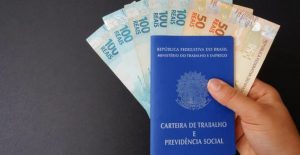In the midst of the new Coronavirus pandemic, the Federal Government decided to create Emergency Aid in order to offer Brazilians better living conditions.
However, not everyone can take advantage of this benefit, which is only available to the unemployed, the self-employed, informal workers and Individual Microentrepreneurs (MEI).
Three other essential requirements for receiving the benefit are: the age of majority, being a mother under the age of 18, having a monthly income per person of up to R$ 522.50 or a family income of up to R$ 3,135.00.
The Emergency Aid will give five installments of R$ 600.00 to each approved individual and, by the end of the year, if the person has received the first installment of the benefit in April, another four installments of R$ 300.00 will be made available.
It is worth noting that Caixa Econômica Federal (CEF) is acting as the operating agent for Emergency Aid, through the Ministry of Citizenship.
Who is not entitled to emergency aid?
Below are the individuals who are not entitled to Emergency Aid:
- Has active formal employment.
- The individual is receiving unemployment insurance.
- The individual is receiving welfare, social security or transfer benefits. However, it should be noted that the Bolsa Família program is an exception.
- He declared more than R$ 28,559.70 in income tax in 2018.
For those who don't know, registration is done through the Emergency Aid website, and you need to fill in the personal details requested on the form. Subsequently, the user's request will be analyzed and, if all the requirements are met, the request will be approved.
Then all you have to do is wait for the calendars to be released with the dates for withdrawing the money. Normally, the dates are set according to the individual's birthday month.
However, for those who receive the Bolsa Família benefit and are registered with CadÚnico, the amount is made available more quickly. All you have to do is go to a Caixa Econômica Federal branch and enter your details.
In addition, there are a number of other options for using the money, such as payments by boleto, bank transfer, virtual debit card, pay by machine and withdrawal without a card.
It is important to remember that the Emergency Aid balance can be checked using the CAIXA Tem application.
Emergency Aid, created as an immediate response by the Federal Government to the economic and social crisis caused by the new Coronavirus pandemic, represented a milestone in Brazil's social assistance policy. Aimed at the unemployed, self-employed, informal workers and Individual Microentrepreneurs (MEI), this benefit has had a significant impact on the daily lives of millions of Brazilians, helping them to cope with one of the most challenging periods in recent history.
Economic and Social Impact
The impact of the Emergency Aid on the economy was profound. By making available five initial installments of R$ 600.00, followed by another four of R$ 300.00 for those who received the first installment in April, the government not only offered direct financial relief to the families most affected by the pandemic, but also contributed to maintaining economic activity. This flow of capital has helped to sustain household consumption, demand for services and products and, consequently, employment in various sectors.
Requirements and Application Process
Eligibility for Emergency Aid was determined by specific criteria, such as not having an active formal job, not receiving unemployment insurance or other benefits (with the exception of Bolsa Família), as well as per capita and total income limits. These criteria sought to target aid to those who really needed financial support during the crisis.
The application process, carried out predominantly online through the Emergency Aid website or dedicated apps, demonstrated the government's ability to quickly implement digital solutions to manage large-scale assistance programs. Although it faced challenges, especially in its early stages, the system allowed millions of Brazilians to apply for and receive the benefit without having to travel, at a time when reducing mobility was crucial to containing the spread of the virus.
Distribution and Access to Benefits
Caixa Econômica Federal, acting as the operating agent, played a central role in the logistics of distributing the Emergency Aid. Through the CAIXA Tem app, beneficiaries were able not only to check their balances, but also to make payments, transfers and even withdrawals without a card, making it easier to use the benefit safely and conveniently.
Challenges and lessons learned
Despite its success in providing rapid assistance to the population, Emergency Aid has faced challenges, including fraud, duplicate registrations and difficulties for some beneficiaries in accessing the system. These issues highlighted the importance of robust verification and validation systems, as well as the need to improve the digital infrastructure and service capacity of the institutions involved.
Legacy
Emergency Aid left a legacy of lessons learned about the government's ability to respond to crises, the importance of flexible social assistance mechanisms and the need to invest in technology and digital inclusion. It also highlighted the importance of public policies that guarantee a safety net for the most vulnerable in times of crisis.
Conclusion
Emergency Aid was an essential measure to mitigate the economic and social effects of the COVID-19 pandemic in Brazil. Its reach and impact have highlighted the importance of well-structured social assistance programs that are adaptable to different contexts. As the country continues to navigate the consequences of the pandemic, the lessons learned from Emergency Aid will certainly inform future public policies, with the aim of building a more resilient and inclusive society.


